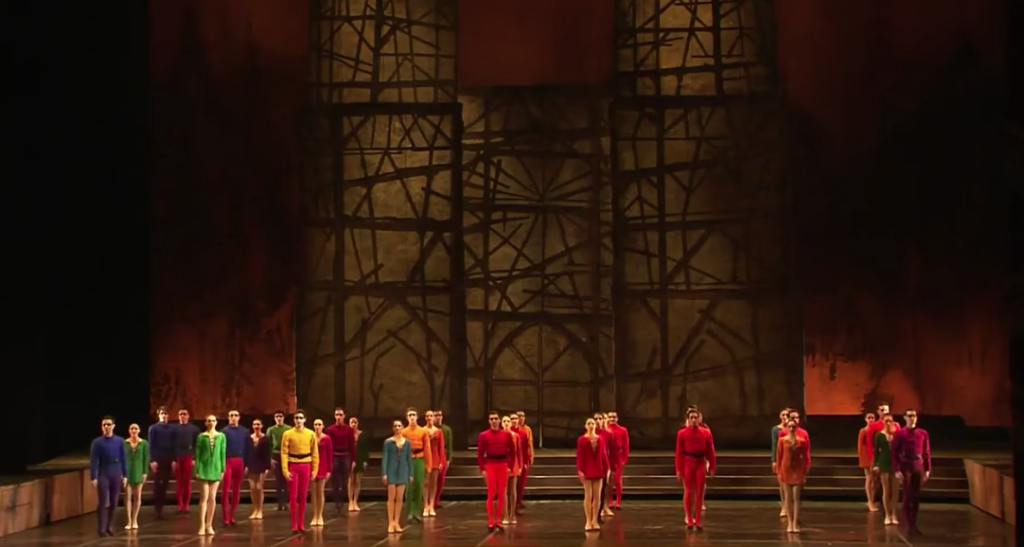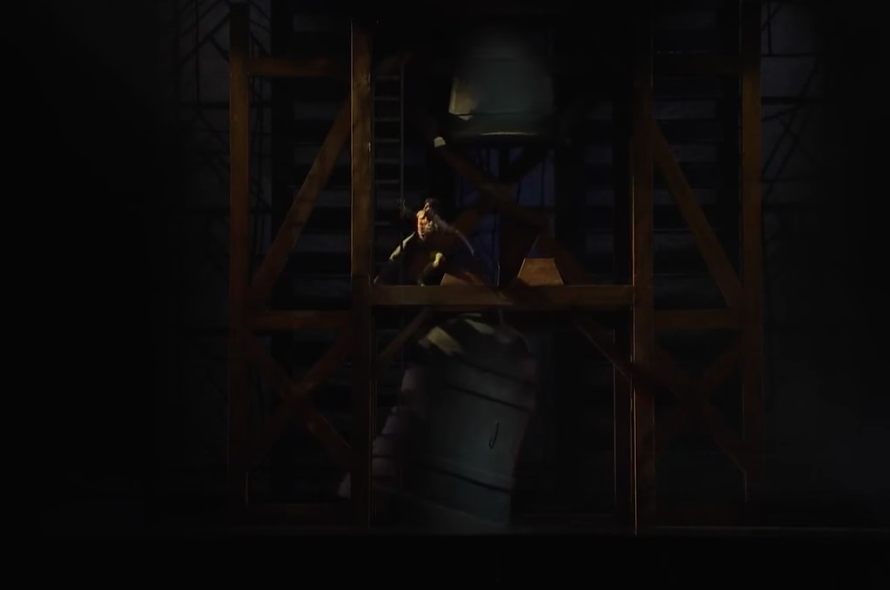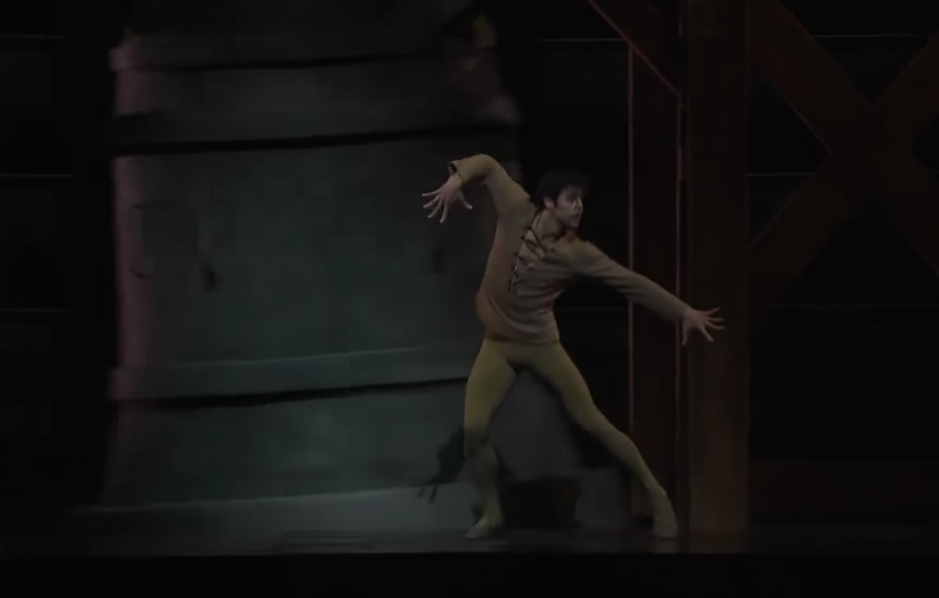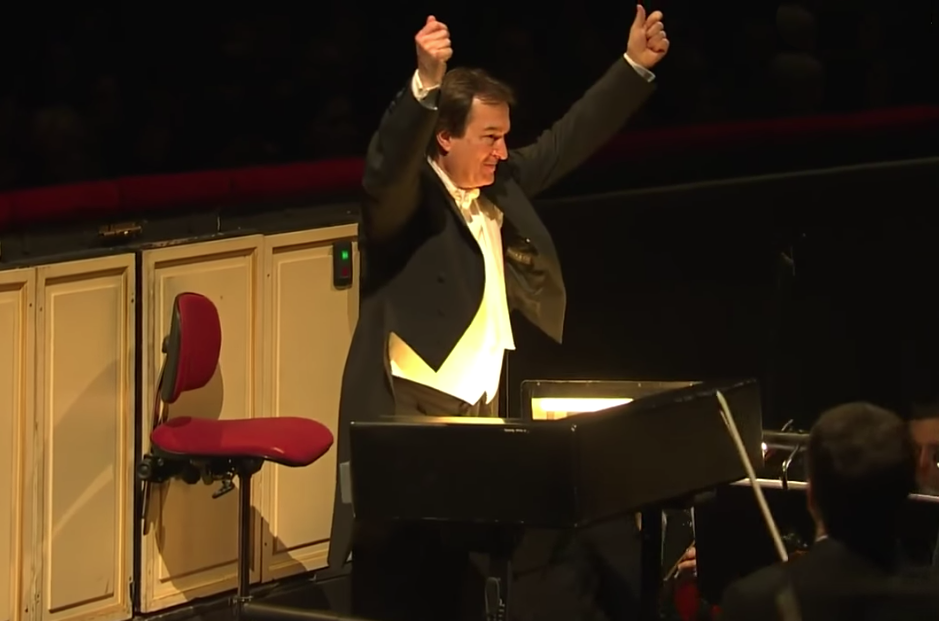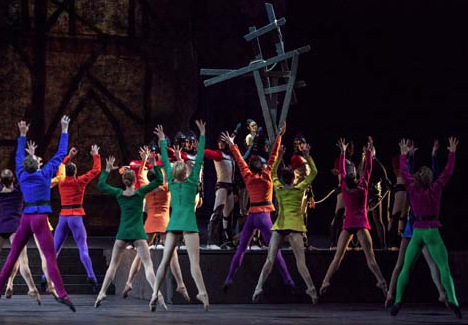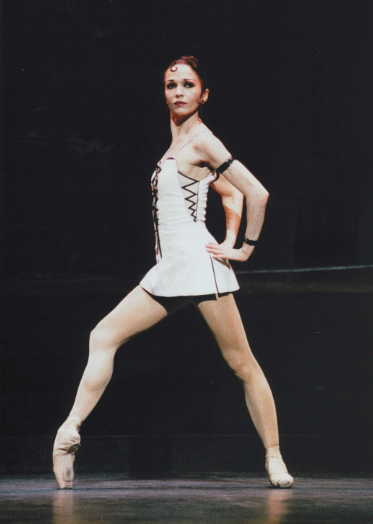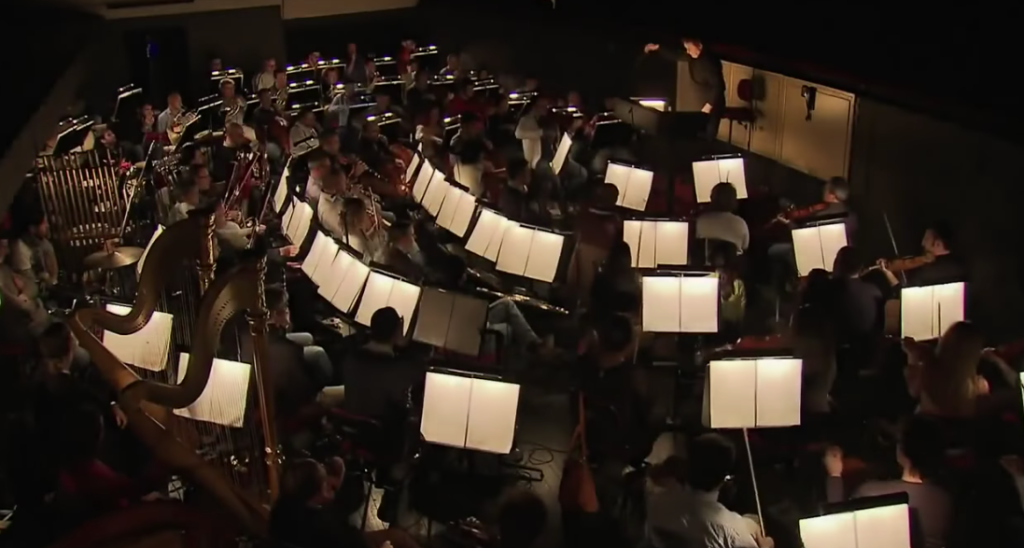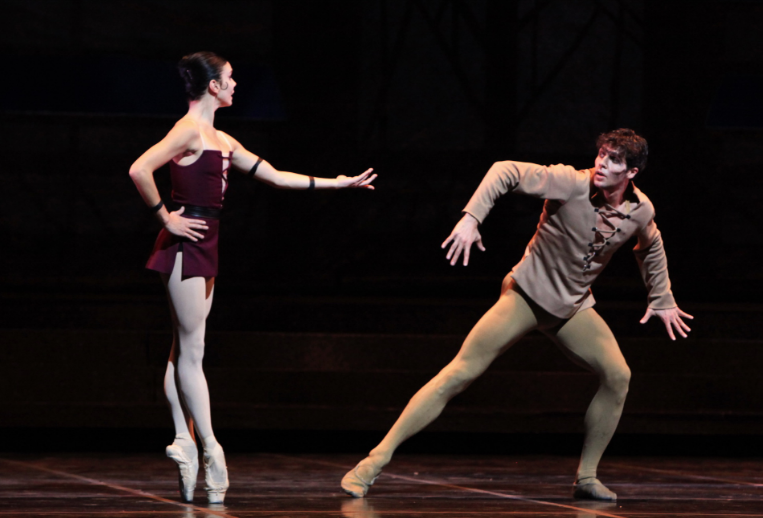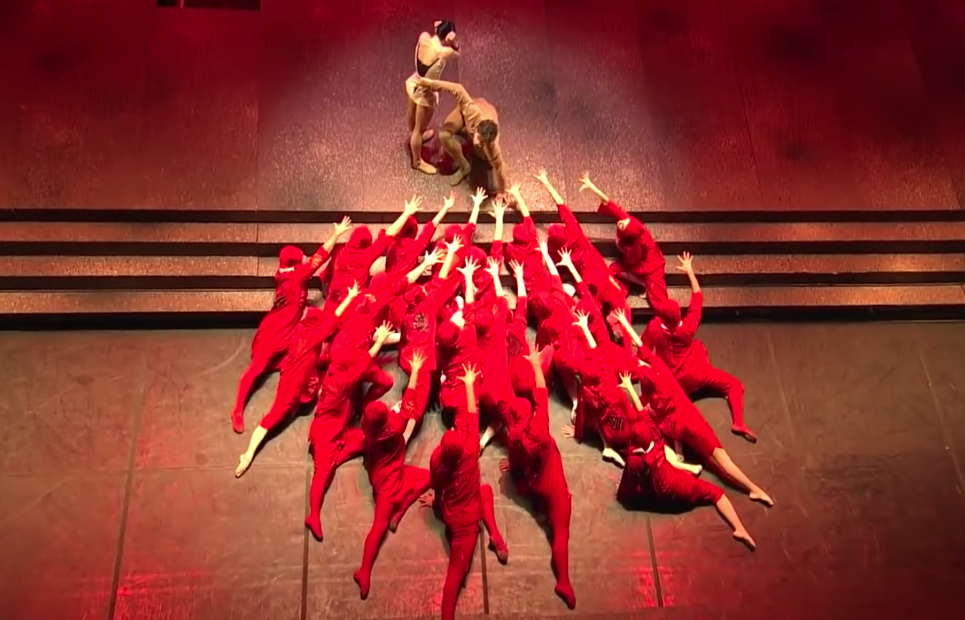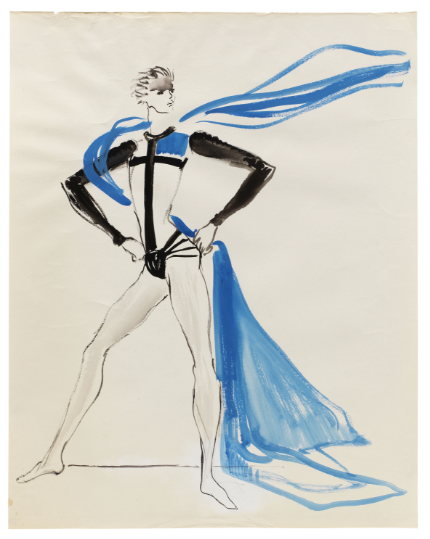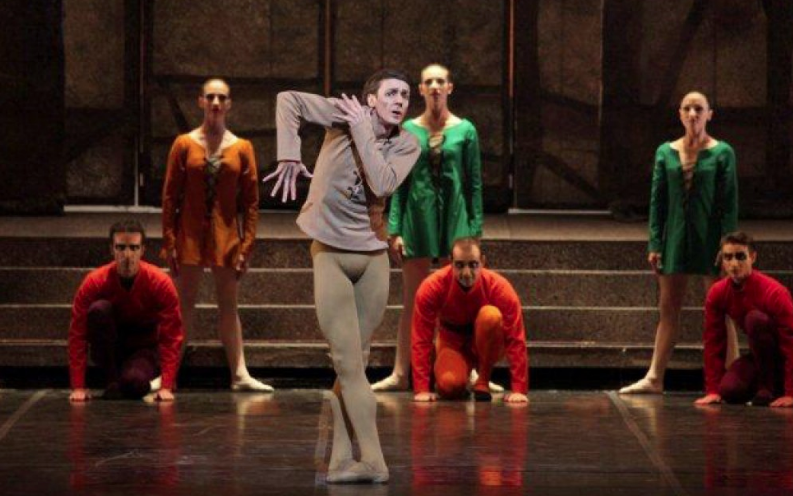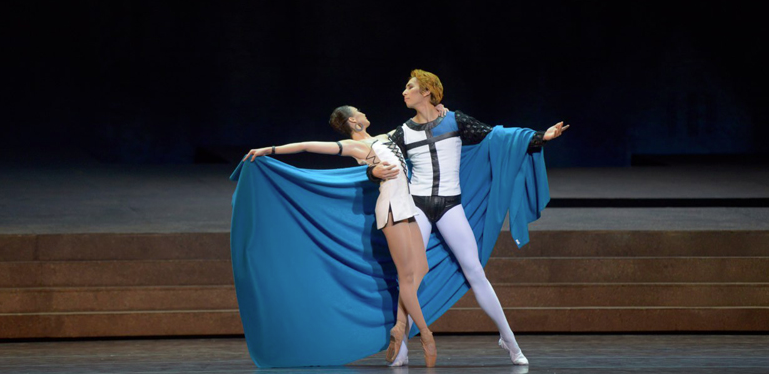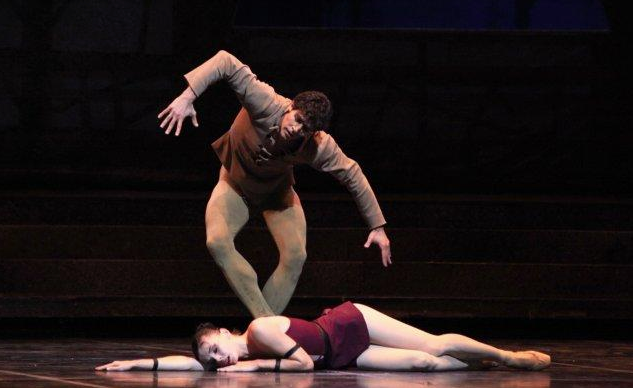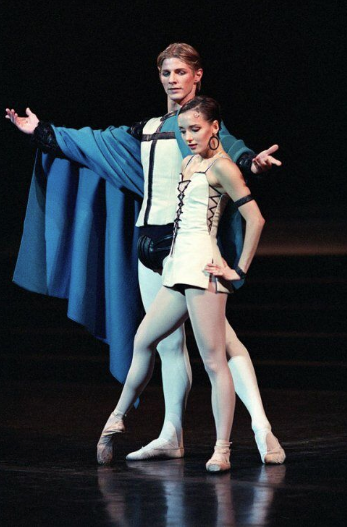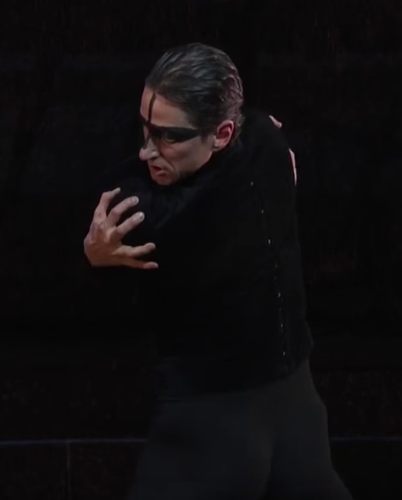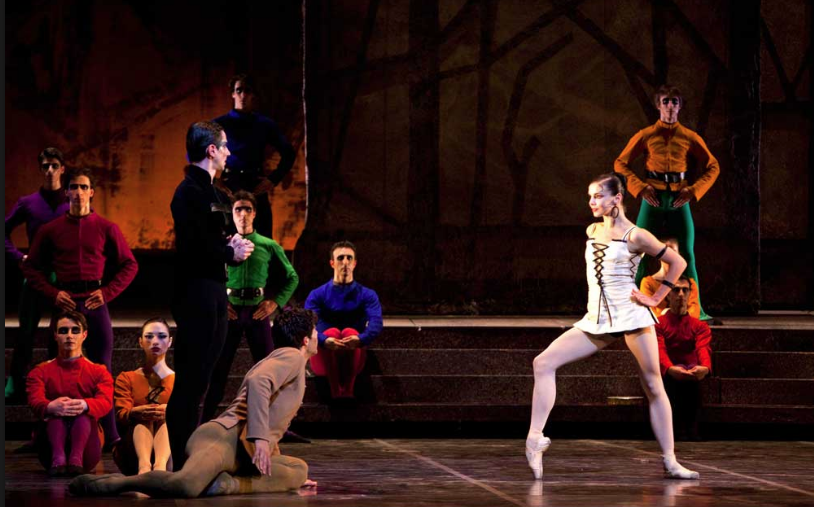
Natalia Osipova as Esmeralda, Roberto Bolle as Quasimodo and Mick Zeni as Frollo, Roland Petit Notre Dame de Paris 2013
This version of Hugo’s novel is very pared down to a very minimal telling of the story. You have the four principal characters: Quasimodo, Esmeralda, Frollo and Phoebus. The ballet doesn’t have Gringoire, Clopin, Fleur de Lys, or extra characters.
As one can guess having only the love/lust plot-line it follows that trajectory and doesn’t concern its self with the subject of blight of the downtrodden, social justice or the modernity of the printing impact on architecture.
It starts with Quasimodo getting crown Pope of Fools, Frollo gets mad. Esmeralda dances to which she attracts the attention of Quasimodo and Frollo.
Frollo then has Quasimodo kidnap Esmeralda. And here is where we a deviation. After Quasimodo grabs Esmeralda they are set upon by the corps dressed in red. Now I was very confused, I had no idea what was happening. I thought it was maybe fire or that the dancers were somehow symbolic of Frollo’s lust. I didn’t know!
According to http://ticket.heraldtribune.com (an actually well-done review) the corps are portraying thugs. This makes sense both within the context of the ballet’s narrative and adapting Hugo’s story. In the original novel after the kidnapping, Gringoire, who was trying to help Esmeralda, is set upon by the Court of Miracles. However the thugs are now in this scene to help convey Quasimodo as more sympathetic as he is protecting Esmeralda. This adaption isn’t really necessary to story and could have been skipped but works to add more dancing which you need in a ballet.
So after the thugs are dealt with, Phoebus then arrests Quasimodo. Phoebus notices Esmeralda and they are attracted to each other. Then Quasimodo is sentenced and Esmeralda gives him water. Esmeralda and Phoebus have their tyst, though he flirts with whores prior and during their time together. That is to communicate Phoebus’ lack of romantic feelings towards Esmeralda and that he just in it for the sex. He is then stabbed by Frollo. I’m pretty sure that Phoebus does in fact die in this version.
Esmeralda has her trial and is sentenced. Quasimodo then saves her from the gallows.
The second act is Esmeralda and Quasimodo bond. Frollo then attacks Esmeralda and I mean he slaps her a bunch. She is then dragged off to her death. Quasimodo strangles Frollo and then carries Esmeralda’s body away.
It is a very basic rendition of Hunchback which is fine for medium of ballet. You don’t want anything too complex but is this telling too simple? Perhaps. It is very pared down to a degree that basic disney’s knockoff have more developed story lines though that is not always a good thing.
To be honest the narrative only works to convey mood, style and dancing and that is what this Ballet is all about. But we should address the character before getting to those points of interest.

